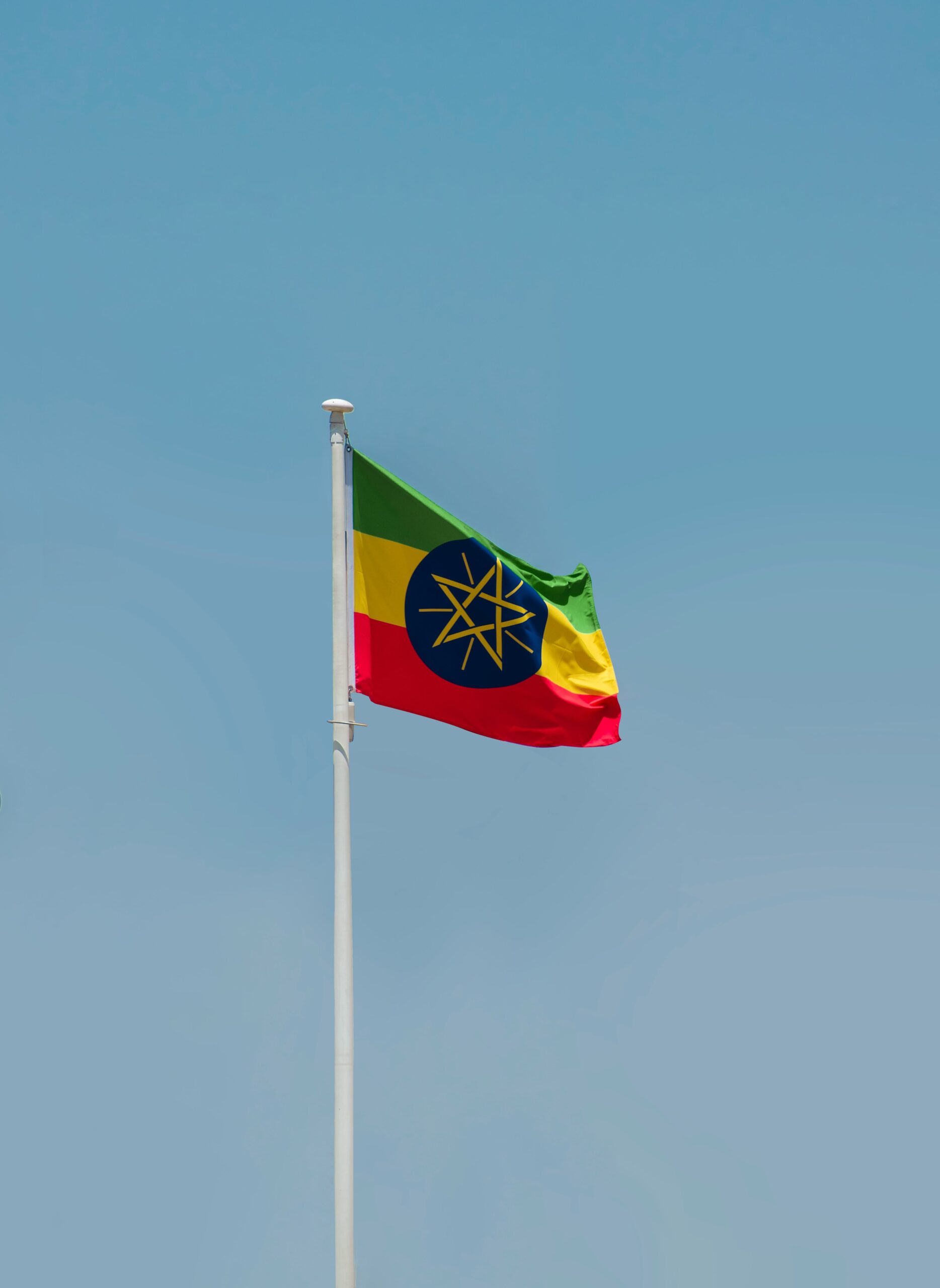Bishoftu Crater Lakes Ethiopia
The picturesque beauty of the Bishoftu Crater Lakes in Ethiopia
When it comes to natural wonders, the Bishoftu Crater Lakes in Ethiopia stand out for their breathtaking beauty and unique landscape. Located in the Oromia region, just a short drive from Addis Ababa, these crater lakes are a true marvel of nature. The area is home to a cluster of volcanic crater lakes, each with its distinct charm and allure.
The serene and tranquil ambiance surrounding the Bishoftu Crater Lakes makes it a popular destination for those seeking a peaceful retreat away from the hustle and bustle of city life. Visitors are greeted with stunning panoramic views of the lakes nestled amidst lush greenery and rolling hills. The crystal-clear waters of the lakes reflect the blue sky above, creating a picturesque setting that is perfect for nature lovers and photography enthusiasts alike.
One of the highlights of a visit to the Bishoftu Crater Lakes is the opportunity to explore the diverse wildlife that calls this region home. Birdwatchers will be delighted by the chance to spot a variety of bird species, including kingfishers, herons, and cormorants among others. The tranquil lakes provide a perfect habitat for these birds, making it a haven for birdwatching enthusiasts.
For those looking to immerse themselves in the local culture, the surrounding villages offer a glimpse into traditional Ethiopian life. Visitors can interact with friendly locals, sample authentic Ethiopian cuisine, and even purchase handmade crafts and souvenirs. The warm hospitality of the residents adds to the overall charm of the Bishoftu Crater Lakes experience.
The Bishoftu Crater Lakes in Ethiopia are a true gem waiting to be discovered. Whether you are seeking a peaceful retreat in nature, a birdwatching adventure, or a cultural experience, the picturesque beauty of the Bishoftu Crater Lakes will captivate your senses and leave you with unforgettable memories.
The Geological Formation and Significance of Bishoftu Crater Lakes
The Bishoftu Crater Lakes, located in Ethiopia, are a series of stunning lakes formed within volcanic craters. These lakes are the result of volcanic eruptions that occurred in the region thousands of years ago, leaving behind depressions that later filled with water from underground springs, rainfall, and runoff. The unique geological formation of these crater lakes has contributed to their exceptional beauty and ecological significance.
The Bishoftu Crater Lakes hold immense geological significance as they provide valuable insight into past volcanic activity in the region. Geologists study these lakes to better understand the volcanic processes that shaped the landscape and continue to influence the area today. The diverse shapes and sizes of the crater lakes offer a glimpse into the complex nature of volcanic eruptions and their long-term impact on the environment.
Beyond their geological importance, the Bishoftu Crater Lakes play a crucial role in supporting local ecosystems and biodiversity. The lakes serve as habitats for a wide range of plant and animal species, many of which are endemic to the region. The surrounding area is lush with vegetation, thanks to the nutrient-rich waters of the lakes and the fertile volcanic soil, creating a haven for various flora and fauna to thrive.
Moreover, the Bishoftu Crater Lakes are not only a geological marvel but also a source of cultural significance for the local communities. The lakes are often considered sacred by the indigenous people living in the region, who hold ceremonies and traditions that are deeply connected to these bodies of water. The lakes are not only places of natural beauty but also cultural heritage sites that hold spiritual importance for the people of Ethiopia.
The Bishoftu Crater Lakes stand as a testament to the Earth’s geological history and the powerful forces that have shaped the landscape over millennia. Their formation tells a story of volcanic activity and environmental resilience, while their significance extends beyond geology to encompass biodiversity, culture, and spirituality. These crater lakes are not just bodies of water; they are living reminders of the intricate relationship between humans and nature, making them a truly remarkable destination for visitors and researchers alike.
The Haven for Birdwatching Enthusiasts: Bishoftu Crater Lakes in Ethiopia
Nestled in the heart of Ethiopia, the Bishoftu Crater Lakes offer a paradise for avid birdwatchers and nature enthusiasts alike. This hidden gem comprises a cluster of stunning lakes formed within volcanic calderas, creating a picturesque backdrop for a diverse range of bird species that call this region home.
One of the main draws for birdwatchers visiting the Bishoftu Crater Lakes is the rich avian biodiversity found in the area. From vibrant kingfishers darting across the water’s surface to majestic African fish eagles soaring overhead, birdwatching enthusiasts are treated to a symphony of colors and calls as they explore the lakeshores and surrounding forests.
The varied habitats surrounding the crater lakes provide a haven for a wide array of bird species, including endemic and migratory birds. The lush forests teem with life, offering ample opportunities to spot elusive species such as the white-cheeked turaco or the striking black-headed forest oriole. As visitors meander along the tranquil pathways, they may also encounter flocks of noisy hornbills or the elegant silvery-cheeked hornbill perched high in the treetops.
For those interested in waterfowl, the Bishoftu Crater Lakes present an ideal location to observe an assortment of aquatic birds. Visitors can glimpse the graceful African darters gliding effortlessly across the water or catch a glimpse of colorful jacanas delicately stepping on floating vegetation. The lakes attract a myriad of herons, egrets, and ducks, providing a spectacle for birdwatchers of all levels.
Beyond the diverse birdlife, the Bishoftu Crater Lakes offer a serene setting that allows visitors to connect with nature in its purest form. Surrounded by verdant landscapes and the soothing sounds of bird calls, enthusiasts can immerse themselves in the tranquility of this natural haven while observing the winged inhabitants that grace the skies above.
The Bishoftu Crater Lakes in Ethiopia stand as a must-visit destination for birdwatching enthusiasts seeking a unique and immersive experience in a breathtaking natural setting. With its abundant avian species, stunning landscapes, and tranquil ambiance, this hidden gem promises an unforgettable adventure for those who appreciate the beauty and wonder of the avian world.
Exploring the Diverse Flora and Fauna Surrounding the Bishoftu Crater Lakes
Nestled in the heart of Ethiopia, the Bishoftu Crater Lakes offer a breathtaking backdrop teeming with diverse flora and fauna waiting to be explored. These lakes, formed within volcanic craters, are not only a sight to behold but also serve as a sanctuary for numerous plant and animal species, making it a haven for nature enthusiasts and wildlife lovers alike.
Surrounding the Bishoftu Crater Lakes are lush forests that are home to a wide variety of plant life. The region’s diverse vegetation includes indigenous species such as juniper trees, African olive trees, and wild coffee plants. These flora not only add to the scenic beauty of the area but also play a crucial role in maintaining the ecological balance of the ecosystem.
In addition to the rich plant life, the Bishoftu Crater Lakes harbor a remarkable array of fauna, making it a paradise for animal lovers. Birdwatchers, in particular, will be delighted by the opportunity to spot a plethora of bird species, including the vibrant and elusive African paradise flycatcher, the striking black-headed forest oriole, and the majestic African fish eagle, soaring high above the lakes in search of prey.
Beyond the avian wonders, the Bishoftu Crater Lakes are also home to a diverse range of mammals, reptiles, and amphibians. Lucky visitors may catch a glimpse of the graceful colobus monkeys swinging through the treetops, the colorful Agama lizards sunning themselves on rocks, or the elusive spotted-necked otters gliding effortlessly through the crystalline waters of the lakes.
Exploring the flora and fauna surrounding the Bishoftu Crater Lakes is a truly immersive experience that allows visitors to connect with nature on a profound level. Whether hiking through the verdant forests, birdwatching along the shores of the lakes, or simply soaking in the sights and sounds of this unique ecosystem, the region offers a one-of-a-kind opportunity to witness the wonders of the natural world up close.
the Bishoftu Crater Lakes stand as a testament to the beauty and biodiversity of Ethiopia’s natural landscapes. By preserving and appreciating the diverse flora and fauna that call this region home, we can ensure that future generations will continue to be inspired by the magic of this unique ecosystem.
Sustainable Tourism Practices in Bishoftu Crater Lakes Region
When it comes to preserving the natural beauty and ecological balance of a destination like Bishoftu Crater Lakes in Ethiopia, sustainable tourism practices play a crucial role. These practices not only help in conserving the environment but also support the local communities and economy in the long run.
One key sustainable tourism practice in the Bishoftu Crater Lakes region is the promotion of responsible travel behavior among visitors. This includes educating tourists about the importance of respecting the environment, local culture, and traditions. By raising awareness and encouraging mindful tourism, the impact of visitors on the delicate ecosystem of the crater lakes can be minimized.
Another important aspect of sustainable tourism in the Bishoftu Crater Lakes area is the development of eco-friendly accommodations and infrastructure. By investing in green initiatives such as solar power, water conservation systems, and waste management programs, the region can reduce its carbon footprint and preserve its natural resources for future generations.
Furthermore, supporting local communities through tourism plays a significant role in sustainable practices. By partnering with indigenous people for guided tours, cultural experiences, and handicraft sales, the revenue generated from tourism can directly benefit the residents of Bishoftu and empower them to protect their environment and heritage.
Engaging in conservation efforts and wildlife protection is also a crucial element of sustainable tourism in the Bishoftu Crater Lakes region. By establishing protected areas, enacting wildlife preservation laws, and supporting research initiatives, the biodiversity of the crater lakes and its surroundings can be safeguarded from unsustainable practices.
By embracing sustainable tourism practices in the Bishoftu Crater Lakes region, visitors can enjoy a unique and pristine natural environment while ensuring that future generations can also experience the wonders of this breathtaking destination. By working together to protect the environment, support local communities, and preserve wildlife, sustainable tourism can pave the way for a harmonious coexistence between nature and tourism in Bishoftu.
Conclusion
The Bishoftu Crater Lakes in Ethiopia stand as a testament to the awe-inspiring beauty of nature and the rich biodiversity that thrives within its unique ecosystem. These crater lakes, formed by volcanic activity thousands of years ago, not only serve as a picturesque landscape but also hold significant geological importance in the region. The surrounding area is a haven for birdwatching enthusiasts, offering a glimpse into the diverse avifauna that call these lakes home.
Explorers and nature enthusiasts are drawn to the Bishoftu Crater Lakes not only for their scenic charm but also for the opportunity to witness a wide array of plant and animal species that flourish in this environment. From lush vegetation to colorful bird species, the area surrounding the lakes is a paradise for those seeking to immerse themselves in the wonders of nature.
One of the key aspects of visiting the Bishoftu Crater Lakes is the opportunity to engage in sustainable tourism practices that not only protect the delicate ecosystem but also support the local communities that depend on the region for their livelihoods. By promoting responsible tourism efforts, visitors can help preserve the natural beauty of the area for generations to come.
As visitors traverse the trails and pathways around the Bishoftu Crater Lakes, they are greeted with a tapestry of flora and fauna that showcases the resilience and diversity of life in this volcanic landscape. From vibrant flowers to exotic bird species, every corner of the Bishoftu Crater Lakes region tells a story of adaptation and coexistence.
In essence, the Bishoftu Crater Lakes offer a unique opportunity for travelers to immerse themselves in the wonders of nature while also learning about the geological significance of these natural wonders. Whether it’s the breathtaking vistas, the diverse bird species, or the lush vegetation that captivates your attention, a visit to the Bishoftu Crater Lakes promises an unforgettable experience that will leave a lasting impression on all who venture to this enchanting corner of Ethiopia.




